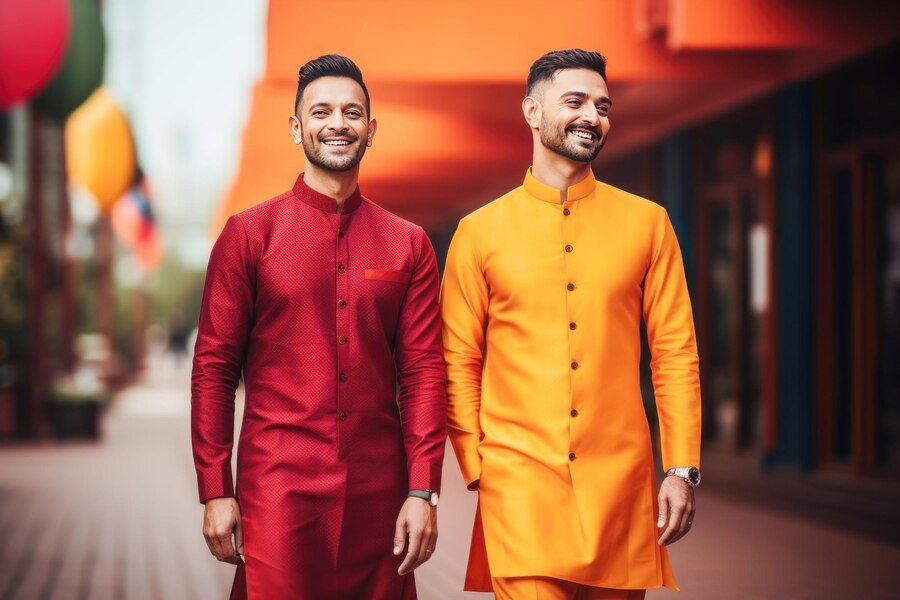Another attractive fabric of South Asia is clothing, which is basic as well as essential to traditional and modern dressing habits and elements such as kurtas and kameezes. While there is considerable popularity of these two pieces, there often exists a certain confusion as to the difference between the two. From matters about fashion and personal likes to tradition and a little bit of information regarding various wearables, the journey through the realms of ethnic wear for men provides insight into both.
1. First Issue: About Kurta & Kameez
Kurtas and kameezes are garments with strong historical associations with South Asia, although there is a minor difference in the historical use and the earlier forms of the garment. Kurta is popularly said to have derived from the attire of the ancient Persians, though it was mainly a men’s garment in South Asia for a long time but has changed its banner to women. The kameez emerged from the Central Asian breeches and was adopted in areas such as Punjab, while the shalwar kameez is today considered to be the more typical South Asian garment.
2. Defining Features of a Kurta
A kurta normally is a long tunic that could be close to the knees and might even reach the ankles. Kurtas do not have collars or have a very basic band collar, which gives a rather relaxed formal look. They can be of any gender, with different designs for men and women having different cuts and stitching and even different accessories. In recent years, many styles of ethnic wear for men, including straight cut, long shift A-line kurtas, asymmetrical, and many more, are available in the market according to occasions and sizes of the body.
- Fit & Structure: Kurta’s fit is generally broad and loose, allowing free movement, and is preferred for ventilation.
- Occasions to Wear: Again suitable for informal occasions, a kurta can be accessorized or worn in trendy and formal styles such as elaborate embroidery, beads, or special classy cuts.
- Styling Options: Kurtas complement churidars, jeans, and skirts too, and therefore they are ideal wear.
3. Understanding the Kameez
The kameez is more formal than the loose-flowing kurta that is commonly worn with trousers or a long dhoti combined to form the Salwar kameez dress. The kameez is typically more sharply tailored, and it has a figure-hugging cut, which enhances the curves of the body. It is usually worn at mid-thigh or a little above the knee, and the style is somewhat fitted and would include darts and cuts.
- Fit & Structure: Kameezes are stitched slightly tighter compared to the usual shalwar kameez, which adds elegance to regular wear.
- Occasions to Wear: Kameezes are appropriate for formal and semi-formal occasions because they are well-fitted, and the bluish sheen they develop when combined with conventional bottoms is stunning.
- Styling Options: Used in combination with salwars, kameezes can be completed with the help of a dupatta as a final touch.
4. Things You Should Consider When Selecting A Style
When it comes to choosing between a kurta and a kameez, it’s all about the occasion, comfort, and personal style.
- Consider the Occasion: If you are dressing for a formal occasion, then it’s luck indeed; the kameez will suit it. To go out for dinner or to wear at work, a kurta is comfortable and still looks very fashionable.
- Comfort is Key: If you are a comfortable and loose-wearing apparel kind of person, then you can go for kurtas. The kameez with the figure-hugging shape is perfect if you like to wear tailored outfits.
CONCLUSION
Knowing the characteristics of both, you can expand your wardrobe and become more open to the possibilities of beautiful South Asian outfits. Therefore, if you like the comfortable feel of the kurta or the afforded structure of the kameez, each is a nice way to embrace tradition with a liberal twist.
Visit the best ethnic wear men’s store in India, Jahanpanah, for an elite collection.

